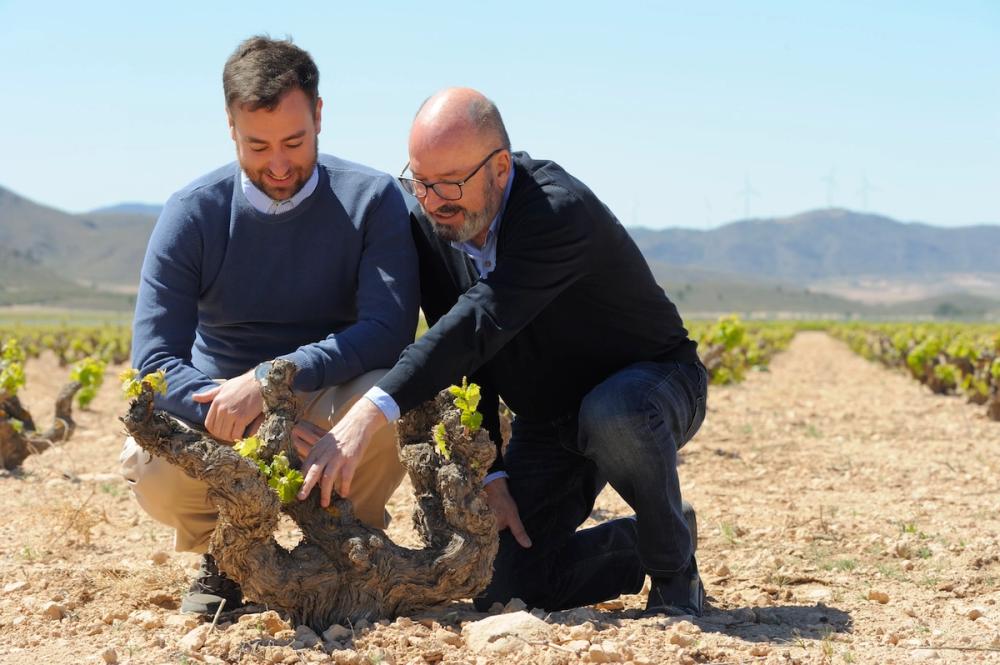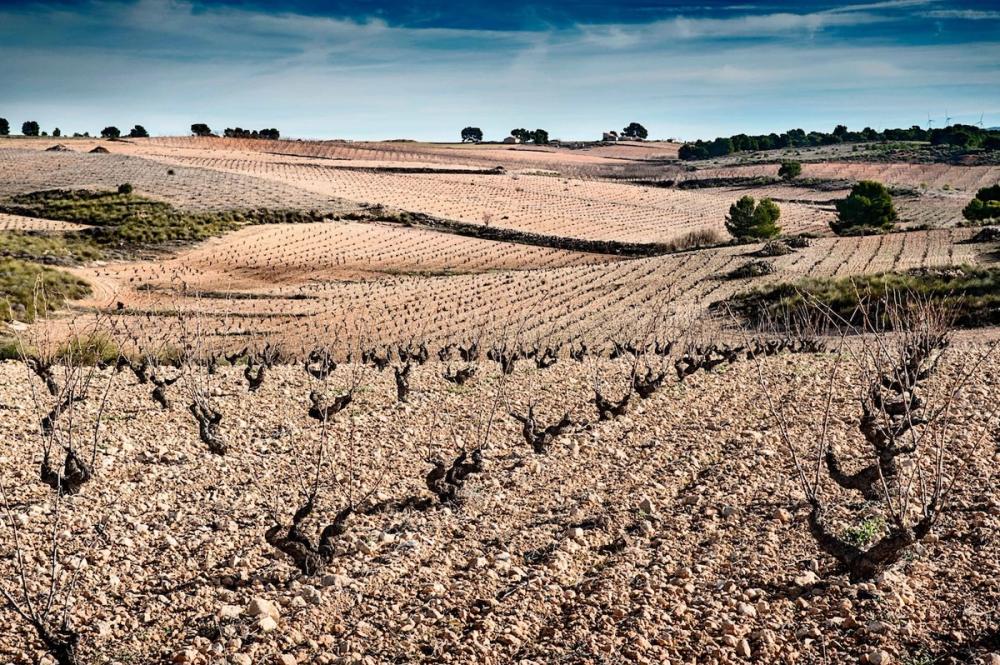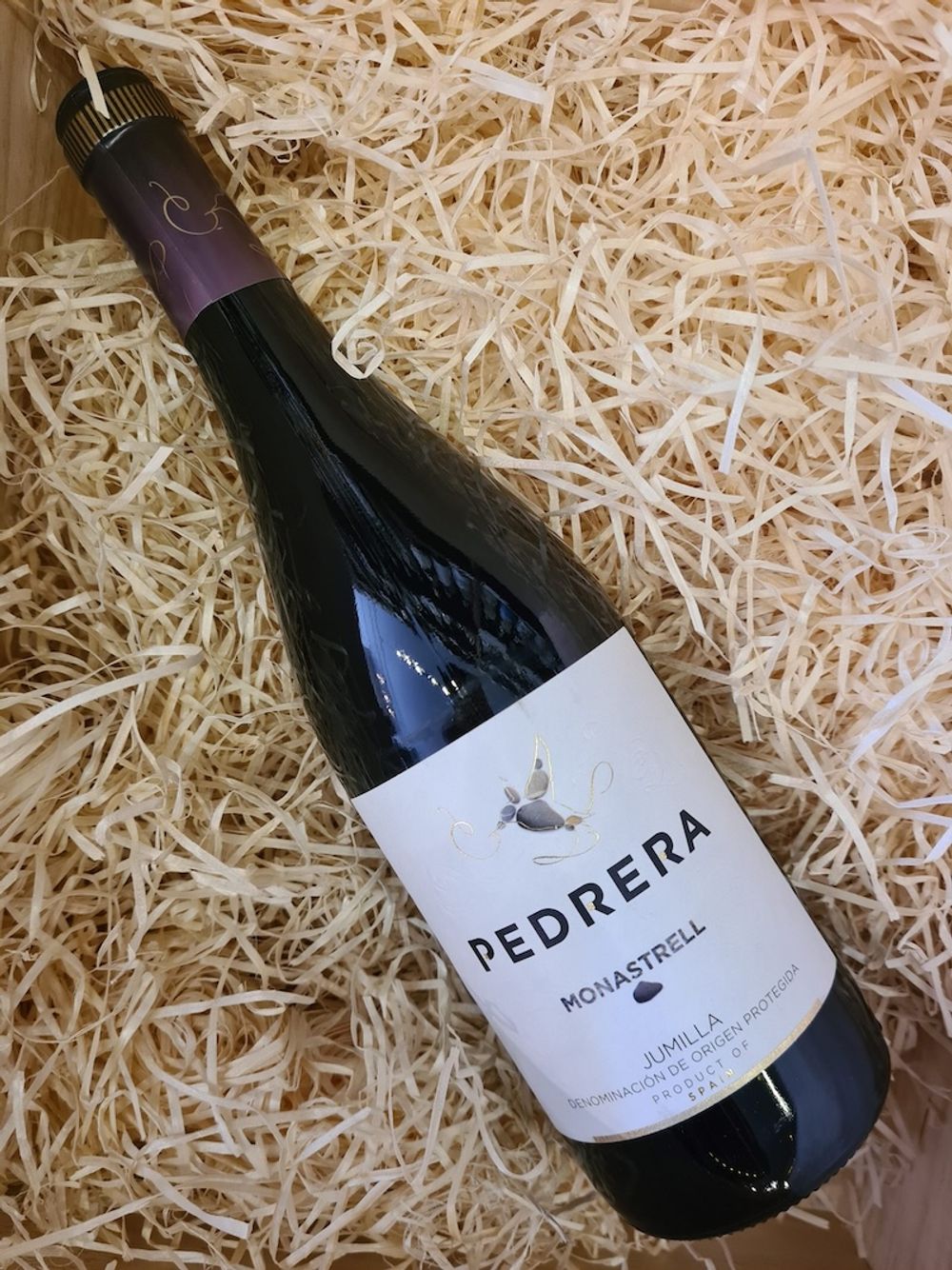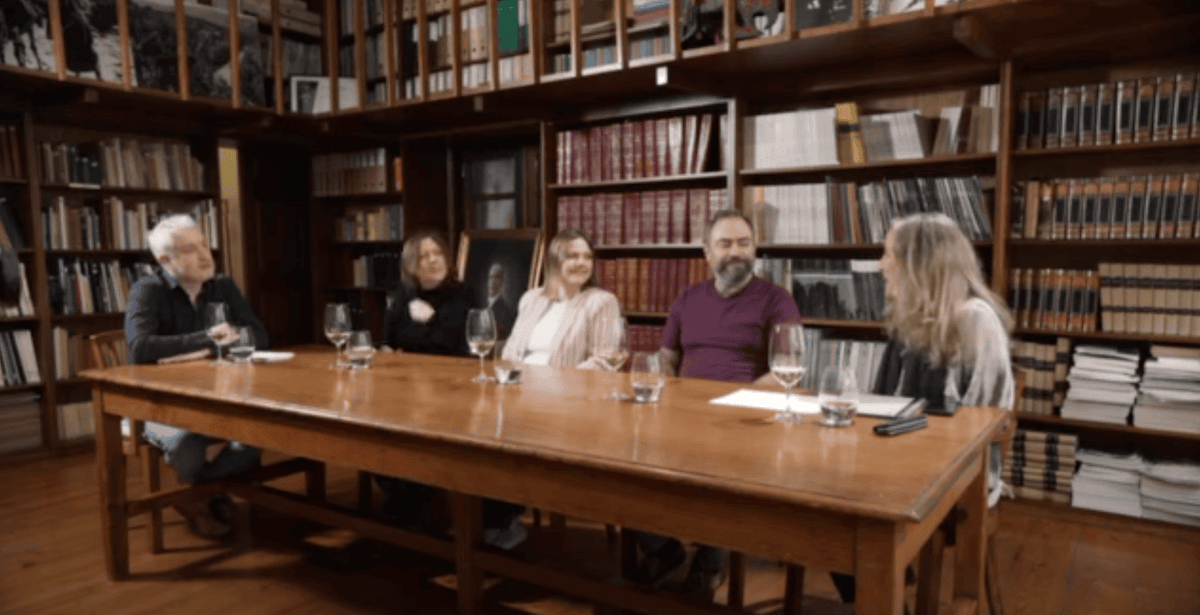In wine, we speak often of terroir – but in Jumilla, terroir doesn’t whisper, it cracks underfoot. This is land shaped by heat, drought, and ancient stones. It's dry. Relentlessly so. Less than 300mm of rain per year. Thin topsoil, thick limestone, roots stretching into struggle. But in this place, Monastrell thrives – a native grape, thick-skinned and small-berried, bred not for beauty, but for survival.

Miguel and Paco Gil amongst old vine Monastrell in Jumilla
We were welcomed into this world by Paco Gil, fifth-generation at Gil Family Estates, and civil engineer turned vineyard custodian. He speaks about Monastrell not as a trend, but as an inheritance.
"These vines are resilient. Some are 90 years old and still producing because they've adapted to the drought. They belong here."
Yet, even resilience has its limits. The 2024 harvest in Jumilla was the smallest on record, with a total of 46 million kilograms of grapes – down 14% from 2023 and 40% below the recent average. Three consecutive years of severe drought have left vineyards "on the brink of destruction," as Paco described. The region's reliance on dry farming, particularly for Monastrell, has made the lack of rainfall especially devastating.

“We believe in doing less to the vines, not more.” – Paco Gil
Despite these challenges, the quality of the grapes remained high. A timely rain in early September provided a glimmer of hope, aiding in achieving excellent phenolic ripeness. The wines from then 2024 vintage are noted for their refinement and elegance, with average sugar and alcohol levels comparable to previous years.
The tasting featured four wines, all made from Monastrell, each shaped by altitude, fermentation choices, oak (or the deliberate lack of it) and, above all, sustainability. Jumilla, it turns out, is not just about hard land. It’s about old vines, organic farming, natural compost and even aromatic insect-repellent cover crops planted along vineyard rows and lighter bottles (even though we’ve had two very heavy ones at this tasting). As Paco put it, “We believe in doing less to the vines, not more.”

Pedrera Monastrell 2022 – Light Touch, Deep Core
Made from 25-30-year-old vines planted on limestone soils in the northeast of Jumilla, Pedrera is vinified in stainless steel with indigenous yeast, no oak, and plenty of clarity. It opened with notes of black cherry and cinnamon, followed by a structural firmness that gave it presence without aggression. The tannins were grippy but not rustic, and there was a long, unfussy finish that echoed ripe fruit and mineral edge.
At 13.5% ABV, it felt balanced and bright. No makeup, no wood – just Monastrell in its unadorned youth. It reminded me of a fresh red with an old soul. One that knows the land it came from.
Comoloco 2022 – No Sulphites, No Apologies
Comoloco to me was the unexpected star of the tasting. A no-sulphite, low-histamine, organically grown Monastrell with a broader palate and silkier texture than its minimal intervention would suggest. The cap is manually submerged during fermentation, and the winery uses nitrogen micro-particles to prevent oxidation – removing the need for added sulphites entirely.
Herbaceous intro, raspberry leaf, soft texture, salty and umami length. It had a touch of toffee, and a ruby glow in the glass. But what stood out most was how structured and complete it felt, like a natural wine that didn’t fall into the trap of being too wild or soft. The silky tannins gave it definition, while the saline finish lingered long after the glass was empty.
This is a wine for those who think they’ve tasted “natural” and moved on. Comoloco has something to say.
Juan Gil 2022 – Freshness in a Light Frame
Moving up the scale in both weight and intent, Juan Gil 2022 shows what happens when old vines and altitude (800+ metres) come together with measured oak use and elegance. This Monastrell, from 40-year-old vines, offered blackberries, rhubarb, rosemary, and pine on the nose – cool, aromatic, and inviting.
At 14.5% ABV, it wore its alcohol lightly. The wine had a silky length, a pale, polished tone, and a mouthfeel that suggested restraint. Paco described it as their most expressive label: “We put our name on it. This is the one we stand behind.” And it shows.
Clio 2022 – Power in Progress
Then came Clio, a powerful blend of 70% Cabernet Sauvignon and 30% Monastrell, aged in 100% new French and American oak barrels. At 15% ABV and in a heavy bottle, it makes no attempt to hide its boldness.
My notes: smoky, tobacco, chocolate, graphite, black pepper. The tannins were dense, the oak dominant, but not without promise. There’s an umami depth and long finish that hints at what this wine will become with time. Right now, though, the oak wears the crown. Give it a few years to settle into itself.
It’s a wine for those who enjoy their reds smoky, sculpted, and unapologetically full-throttle.
Some thoughts
What stood out in this tasting was the diversity of the wines and the singularity of the place. Jumilla is not trying to be anywhere else. It is lean, weathered, bright, mineral, and full of contrast. Paco called it “a land of survival.” And Monastrell, its native voice, reflects that perfectly – resilient, honest, and expressive when allowed to be.
Whether in the structure of Pedrera, the natural elegance of Comoloco, the finesse of Juan Gil, or the power of Clio, this tasting told a story not just of grape and glass, but of how sustainability and heritage can align without compromise.
As Paco reminded us, “Legacy isn’t what we inherit. It’s what we make possible for the next generation.”
The wines of Gil Family Estates are imported and sold in the UK through Boutinot
































